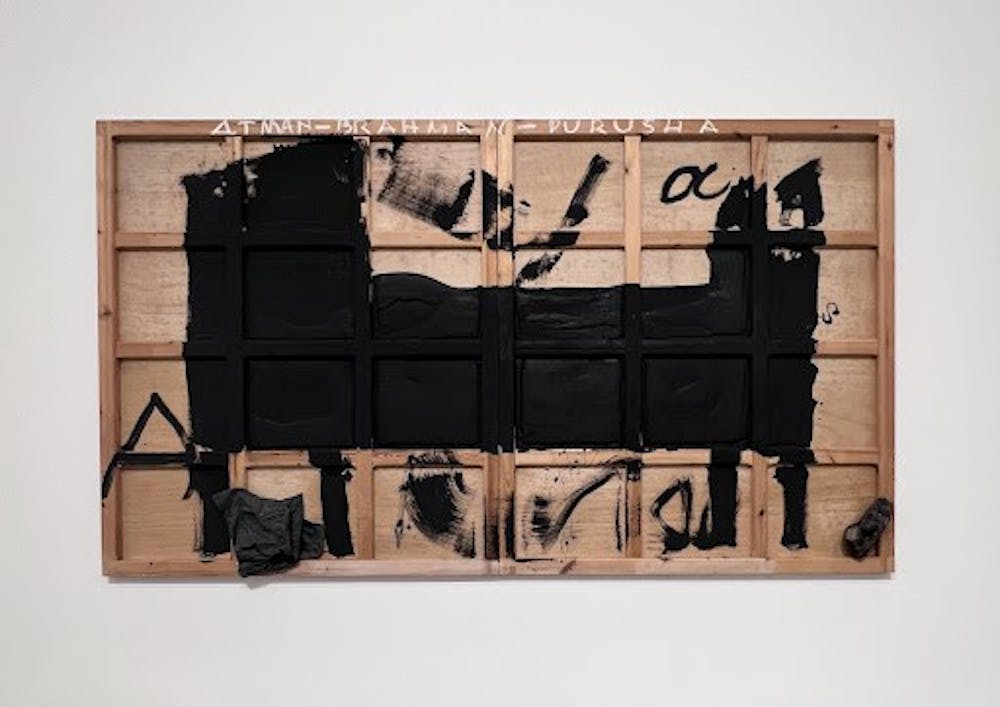On Sept. 22, I had the opportunity to visit the Pace Gallery of New York for a viewing of one of the gallery’s most recent exhibitions, “Antoni Tàpies: Transmaterial.” Antoni Tàpies is recognized as “one of the leading artistic voices to emerge from postwar Europe,” according to the press release provided by the Pace Gallery. The exhibit showcases a number of Tàpies’s works, in which he considers death, spirituality, and the tense political climate of postwar Spain through his unconventional use of textiles, spray paint, and everyday objects.
I was excited to experience the exhibition in person, so I rode the train to New York on an early Thursday morning. I arrived at the gallery at about 10 a.m., shortly after it opened. I wanted to come into the exhibition with a blank slate, so I did little to no research about Tàpies prior to the exhibition. I am by no means an art critic or a historian. Thus, I struggled to understand the exigency which inspired Tàpies’s art and the reasons behind his use of household objects like bed frames and towels, as well as earthy materials like dirt and sand.
The first piece I saw when walking into the exhibit appeared to be the silhouette of a bed with an assortment of random slashes and symbols, accompanied by a pair of sweatpants and a single loafer. The painting is divided into numerous frames, yet every stroke seems to reach past the confines of their borders. Across the top of the piece, the words “Atman,” “Brahman," and “Purusha.” Translated from Hindi, each word refers to the “self-existent essence of human beings,” “the supreme existence of all of reality,” and “consciousness,” respectively. In this way, it can be argued that this piece in particular favors the idea that self-awareness and fruitful introspection being attainable from the most simple objects in life; the piece is, in essence, a deep look on viewing the internal from an external perspective.
I was then drawn to a piece that appeared to be a face laid on its side. The skin was composed of polished wood — the canvas of the piece — and the eyes were perceptibly carved out. I remember feeling a bit curious as to why Tàpies would choose to depict this face in this way. I would later find more context for the piece through researching postwar Spain. The social and political climate of Spain following both World War II and its own civil war was tense; an authoritarian state under Francisco Franco enforced repression of civil discontent and censored press, around the time Tàpies was in his 20s. Citizens were effectively blinded and subdued by an oppressive government.
Though my interpretations of Tàpies's work certainly could be limited, I grew enamored with the pertinence of his craft. The exhibit reminded me that numerous real-world connections can be drawn from a few simple strokes. It could prove beneficial to take time to really analyze art of this nature. If nothing else, it offers invaluable perspective.
Throughout his artistic career, Tàpies, a Barcelona native, made contributions to world-wide movements including Abstract Expressionism, Surrealism, and Arte Povera. With “Transmaterial,” the Pace Gallery focuses on Tàpies's fondness of finding beauty in oblivion; insight on postwar Spain; and personal interactions with existentialist wonderings, motifs commented on by all works featured in the exhibit.
I hope readers of this article will consider visiting, in their own time, the Pace Gallery and other galleries to view Antoni Tàpies’s work, to be both bewildered and inspired to learn more about the deeper meanings hidden within his art.
All works by Tàpies covered here and more are on display at the Pace Gallery of New York until Oct. 22. The Pace Gallery is located off of 10th Avenue and 25th Street in the Chelsea district of Manhattan. Guests are able to view the gallery free of admission.
Jaden Sharp is a contributing writer for The Prospect at the ‘Prince.’ He can be reached at js7549@princeton.edu or on Instagram at @jadenxsharp.









